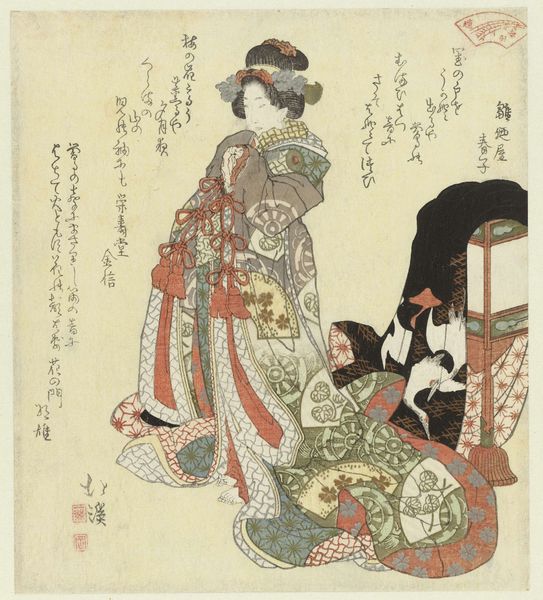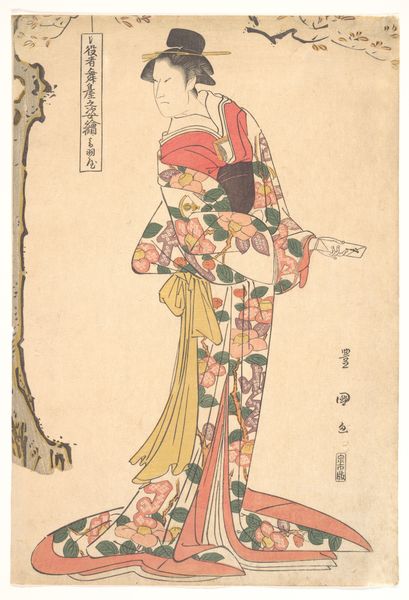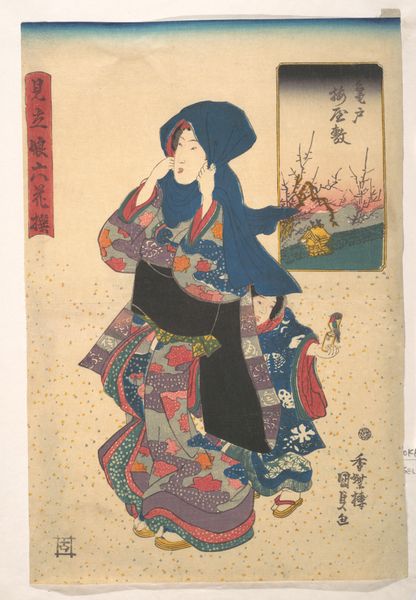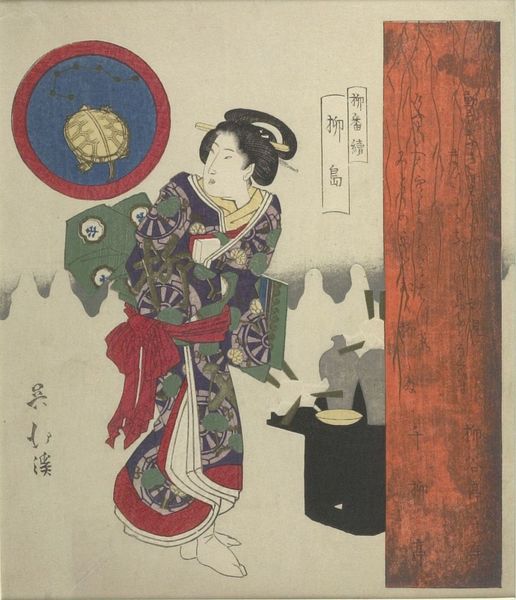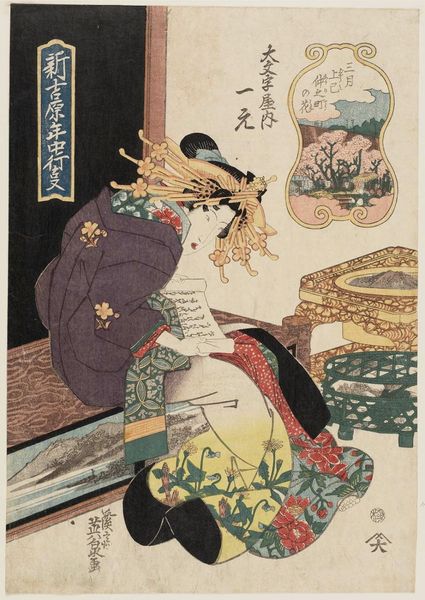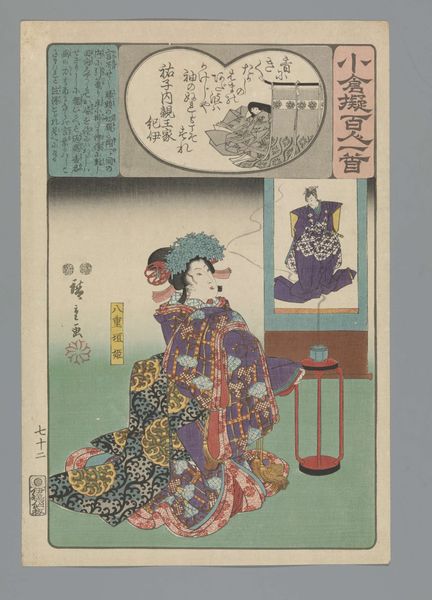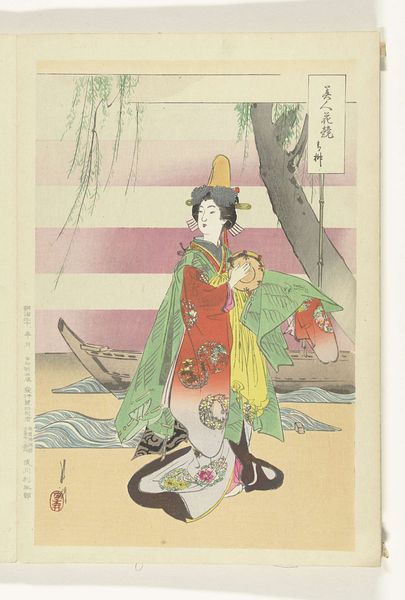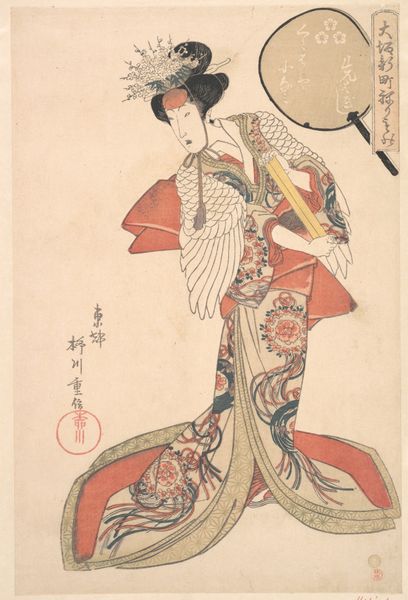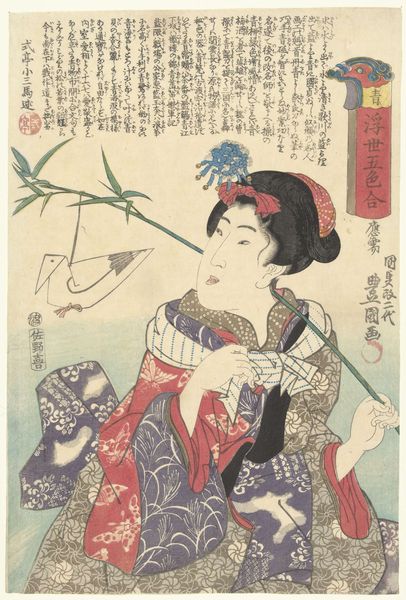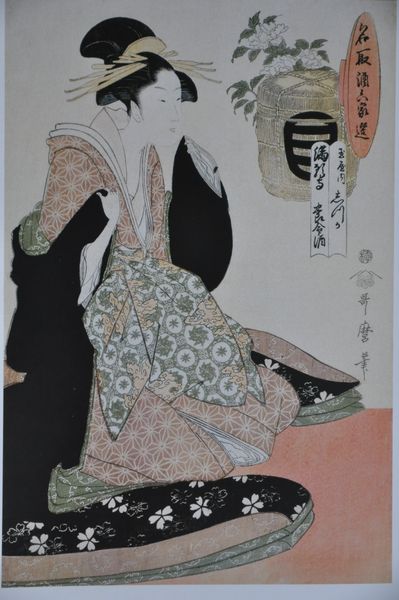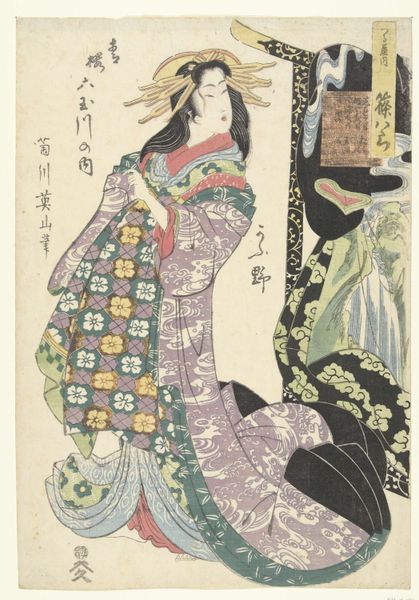
Dimensions: height 350 mm, width 238 mm
Copyright: Rijks Museum: Open Domain
Curator: Looking at this woodblock print, my eye is immediately drawn to the dancer's posture and flowing garments. There’s an undeniable sense of grace and delicate movement, a real visual harmony. Editor: You’re right. That visual harmony is crucial to appreciating Ogata Gekko’s "Dansende Vrouw," or "Dancing Woman," created between 1887 and 1896. Works such as this offer invaluable insights into Meiji-era artistic tastes and the evolving role of women as both subjects and consumers of art. Curator: Absolutely, and consider the composition. The artist’s masterful employment of line to define shape, volume, and to suggest dynamism. See how those linear arrangements throughout are designed with the singular intent of guiding the spectator's eye across the picture's surface, taking in every nuance! Editor: Indeed. The controlled line work typical of the Ukiyo-e style emphasizes flat planes of colour. The layering of clothes, the colour harmonies with the flower motif on the wall, create an evocative impression that hints at a certain social milieu and the staging of feminine grace. Curator: Beyond the composition, one cannot ignore its sociopolitical underpinnings. In that era, Japanese art contended with Western influences and a push to define national identity. Gekko skillfully balances tradition with modernity in both style and subject. Editor: True, that is one way of interpreting it, yet even ignoring the sociohistorical setting of this Japanese artwork one can read it formally as an image centered on elegant gestural language achieved through simplified forms, with those exquisite hanging purple wisterias on the screen on the background as one additional decorative flourish. Curator: A decorative flourish certainly evocative of a culture seeking to refine and redefine itself. Thank you for that fascinating dissection! Editor: My pleasure. Art speaks on many levels, it seems.
Comments
No comments
Be the first to comment and join the conversation on the ultimate creative platform.
